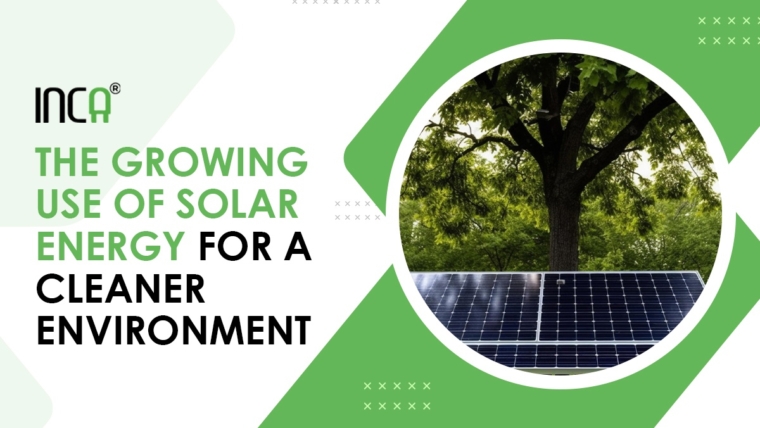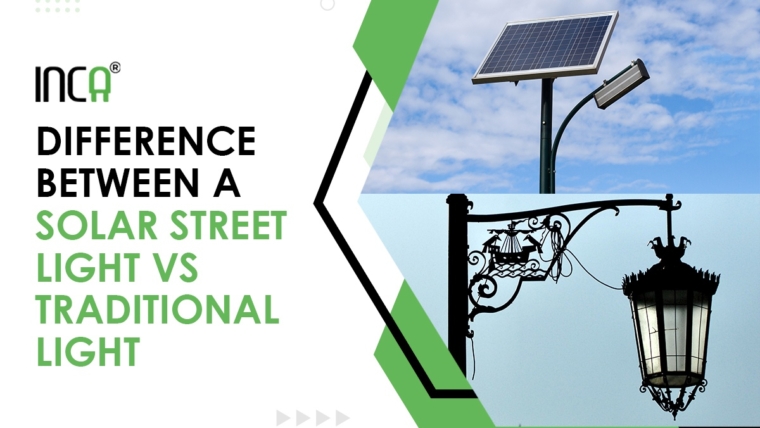Solar streetlights are standalone systems that get their energy from photovoltaic cells. They are usually installed on streets, roads, and highways to provide illumination during the night. Solar street lights are an increasingly popular choice as they are environmentally friendly and have low maintenance costs. In this article, you will get to know about various components of solar street light and how it works, and by the end, you will get an idea of why they should become the new norm.
Components of a solar street lighting system
A solar street lighting system consists of a solar panel, batteries, a charge controller, and a light fixture.
Solar panel
The solar panels that make up a solar street light are usually made from silicon or gallium arsenide semiconductors (GaAs) because these materials have superior efficiency at converting sunlight into electricity compared to typical silicon-based photovoltaic cells.
Solar panels cannot be directly connected to an electronic device because they need something else to convert their energy into usable electricity.
There are a few different types of solar panels used in solar street lights, each with its own advantages and disadvantages.
One type of solar panel is the monocrystalline panel. Monocrystalline panels are made from a single piece of silicon, making them very efficient at converting sunlight into electrical energy. However, they are also the most expensive type of panel.
Another type of solar panel is the polycrystalline panel. Polycrystalline panels are made from multiple pieces of silicon, which makes them less efficient than monocrystalline panels. However, they are also less expensive, making them a good option for many solar street light systems.
Batteries
Solar lighting systems rely on batteries to store energy collected from the sun during the daytime, which is then used to power the lights at night.
First, you need to know the types of batteries used in solar street lights. There are various types of batteries that can be used in a solar street lighting system.
The most advanced type is Lithium Ferro Phosphate batteries (LiFePO4). These batteries are becoming increasingly popular for solar street lights due to their high energy density and long life span. Additionally, lithium batteries can be easily recycled, making them an environmentally friendly option.
Charge controller
A solar charge controller is a part that controls the flow of electricity from the solar panel to the battery. The charge controller is an essential component of a solar street lighting system.
It is responsible for regulating the charging and discharging of the batteries, as well as for protecting the batteries from overcharging. Without a charge controller, the batteries would be susceptible to damage from overcharging and would not last as long.
There are two main types of charge controllers used in solar street lights: Pulse Width Modulation (PWM), Maximum Power Point Tracking (MPPT)
Pulse Width Modulation (PWM) is the most common type of charge controller used in solar street lights. PWM controllers regulate the voltage and current from the solar panels to the batteries to prevent overcharging. They can also boost the voltage from the batteries to the LED light fixtures, increasing the brightness of the lights.
Maximum Power Point Tracking (MPPT) charge controllers are more efficient than PWM controllers but are also more expensive. MPPT controllers can track the Maximum Power Point (MPP) of the solar panels and extract the maximum amount of power from them.
Light fixtures
Light fixtures are another important part of any solar street lighting system. There are a variety of different types of light fixtures available on the market, and each has its own set of advantages and disadvantages.
LED light fixtures
LED light fixtures are used in Solar led street lights. LEDs are very energy-efficient and have a long lifespan. They also produce a very bright light, which can be an advantage in some applications.
How Do Solar-Powered Street Lights Work?
Solar-powered streetlights use solar cells to convert sunlight into electricity. Solar cells are made of semiconductors that are sensitive to light and electricity. They can absorb light energy and convert it into electricity.
The solar cell is connected to a battery that stores the power generated by the solar cell. The stored power can then be used by the street light in case there is no sunlight or when the battery needs recharging.
The solar panel provides power for Solar home lighting systems such as lighting, radio, TV, and other devices that require electric power when there is no other source of electricity available. This helps in saving money on kerosene or diesel fuel used for power generation during cloudy days or at night when there is less sunlight available for charging batteries with solar panels.
What are the benefits of solar streetlights?
Now, Let’s look at the few benefits of solar street lights.
Environmentally friendly
Solar streetlights do not use any fossil fuels or other harmful chemicals like mercury that most other light sources do. They also don’t generate harmful greenhouse gases like carbon dioxide, which contributes to global warming.
Easy to install
Solar streetlights can easily be installed by anyone with basic DIY skills, so it’s not necessary to hire a contractor or electrician for installation.
Reliable
They are powered by the sun, so they do not require any electricity from the grid. Solar streetlights will continue working even if clouds cover the sun or if there is no direct sunlight available.
Safety
Solar street lights are a safe and effective way to light up a street or area at night. They can provide illumination for pedestrians and drivers, as well as deter crime by lighting up dark areas.
Cost-effective
Solar streetlights are standalone systems that get their power from the sun. It means that they can be placed anywhere, even in remote locations where it would be difficult or impossible to lay power cables. This way, they can save a lot of money compared to traditional streetlights.
Conclusion
In conclusion, solar-powered streetlights offer several advantages over traditional streetlights. They are more energy efficient, they are more environmentally friendly, and they are more cost-effective in the long run. For these reasons, solar-powered streetlights should become the new norm.

